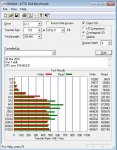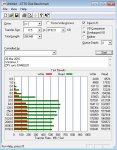CaptnIgnit
Cadet
- Joined
- Sep 29, 2016
- Messages
- 7
I'm building a ESXi server out for my house to accomplish a few things:
- FreeNAS Storage
- pfSense Router
- Plex Media Server
- temp ad hoc VMs for personal projects
Case: Fractal Designs Node 804
Motherboard: SuperMicro X10SRM-F
CPU: Intel E5-2620 v4
Memory: Crucial (32GBx4) 128GB RDIMM
Network: Intel 2x 1Gbps onboard + 2x 1Gbps PCI-E Card
Storage Controller: M1015
Storage: 6x 6TB WD Red
Storage: 2x Intel S3500 SSD (See question about size)
Storage: 2x 32GB SuperDOM
BuildMotherboard: SuperMicro X10SRM-F
CPU: Intel E5-2620 v4
Memory: Crucial (32GBx4) 128GB RDIMM
Network: Intel 2x 1Gbps onboard + 2x 1Gbps PCI-E Card
Storage Controller: M1015
Storage: 6x 6TB WD Red
Storage: 2x Intel S3500 SSD (See question about size)
Storage: 2x 32GB SuperDOM
The 2 SATA DOMs will be mirrored and partitioned as follows:
Questions- 8GB - ESXi Boot
- Remainder - FreeNAS Boot
- 2 Cores
- 64GB RAM
- M1015 Passthrough (6 HDD + 2 SSD)
- 1 Gb Nic Passthrough
- Are there any huge errors I'm making in my HW choices?
- Is dividing up the SSD's a terrible idea? Should the boot devices move off to their own device and leave the SSDs solely for SLOG?
- Do I really need an SLOG? I've read that my particular case is the defacto case for using an SLOG, is that true?
- Is 32GB RAM sufficient? If not, is there a cutoff where more RAM doesn't result in a big performance increase?
- How big should the SSDs be? As size of drive increase the write performance increases. For an SLOG I've read I don't need much space, but write speed is what matters.
- Would I benefit from a L2ARC?
- Other recommendations/advice?
- The M1015 will be maxed out in this config, is that a potential performance concern? What 12 SATA/3 SAS HBAs are recommended?
Last edited:


